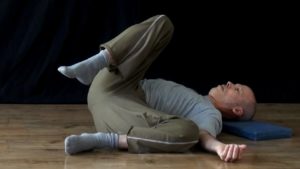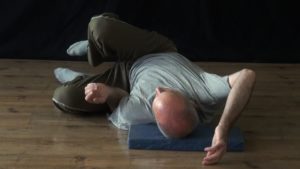When the quality of movement in all its components as well as the means of achieving it is set as a primary goal, the basis of a method is set forth. This method offers a multitude of advantages for more than just a healthy body since a thorough treatment promotes the end result in a way that is beneficial to the body. This method is laden with interest and enjoyment, even when body limitations or problematic and painful areas are being treated. It develops the ability to concentrate and focus on any given subject, as well as on parallel channels simultaneously. It teaches how to respond to essential subtleties that have crucial effects on movement, good or bad, such as its opposite extremes: exaggeration and pain, caution and moderation, set against freedom and plenitude of movement. The extremes themselves are personal, dynamic and change with time. But most occurs in the grey area in between, and that’s where most of the work is done.

A quality movement has yet another advantage: it educates the person to be considerate of the body and to treat it respectfully. In the lessons one learns to treat the body without violence, to abstain from abrupt and sudden movements, to move cautiously and gently and to refrain from over doing it which may cause over-extension and pain. In the course of such movement one may “change his/her mind”, not decide ahead of time on range of movement, and stop the movement as required. In time, body movement becomes more and more polished. The element of being in-tuned to the quality is a skill of fine perception that can be developed further, and serves as a goal to a growing comprehension. By listening to the “how”, the understanding, physical awareness and ability will develop alongside the response to one’s personal needs and abilities.
Our Movement Qualities videos – appear in this order further down this page:
1. Getting up from a lying down position to a knee-to-foot sitting position and back.
2. Getting up from a knee-to-foot sitting position to a standing up position and back, in 2 ways and at 2 quality levels.
3. Transition from lying down to standing up position and back through a knee-to-foot sitting position at a high level of movement quality.
4. Transition from lying down to standing up position and back by a spiral movement at a high level of movement quality.
5. Transition from lying to sitting position and back by arching the torso forwards and backwards at a high level of movement quality.
On the subject of movement quality you will find a few videos displaying different quality of movement containing opposing examples.
While watching a sample guided by Yosepha Michaeli, pay attention to some characteristics of a quality movement:
Moderation; intention; understanding; neural, muscular and joint control; measure, efficiency, thriftiness, keeping “reserves”; fluency; state of relaxation;
Refrain from unnecessary exaggerated effort and stress – no momentum, no falls; precise clearness and aim; sensitivity and awareness to the entire body, and not just to the moving parts.
A movement composed as one sensing all body parts at once; planning and timing a movement fluently and calmly without surprises.


